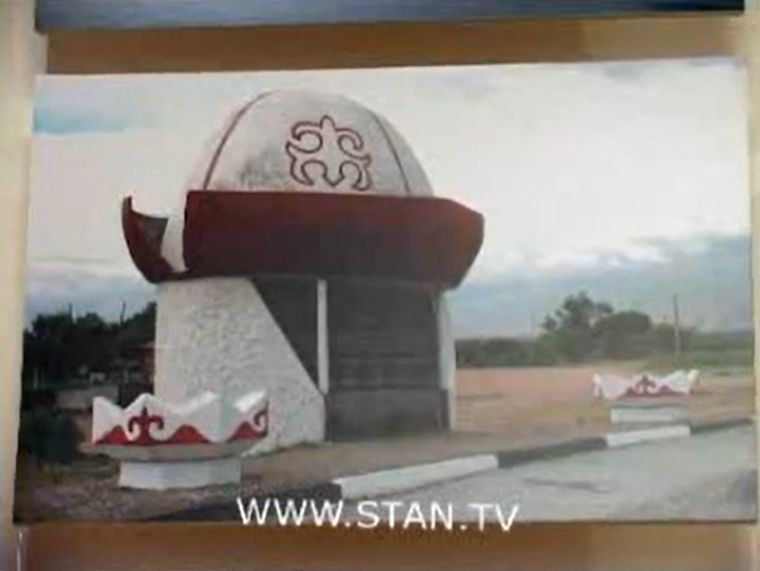Вся наша жизнь полна проблем и суеты. Каждый из нас рано или поздно, сталкивается с необходимостью остановки на мгновение. Мы не успеваем заметить, как прошла жизнь или даже целая эпоха, точка между прошлым и будущим. Остановки были не только местом ожидания транспорта, но встреч и любовных расставаний. Стоя на остановке, мы на миг мысленно возвращались к будням, вспоминали, что давно не звонили родителям и друзьям, забыли сделать ту или иную работу. В свое время каждая остановка была индивидуальна и имела свои черты, свой характер, свой нрав и свой шарм. И это не случайно: так строили их вместе люди разных национальностей, живущие в одной стране одной идеей – как сделать жизнь счастливой. Распалась страна, ушла эпоха, остались лишь ее молчаливые символы – остановки… Уже более десяти лет Джамшед Холиков снимает автобусные остановки Центральной Азии – Таджикистана, Узбекистана, Казахстана, Киргизии. Благодаря симпозиуму «Аланика» его коллекция пополнилась кавказскими фотографиями – он работал в Грузии, Кабардино-Балкарии и Северной Осетии. Теперь можно сказать, что этот фотопроект охватывает всю бывшую советскую часть Великого шелкового пути, от Памира до Северного Кавказа. Советскую эпоху и саму по себе, в целом, можно рассматривать как остановку на Великом шелковом пути, оставившую богатый культурный слой. Автобусные остановки 1940-х – 1980-х годов демонстрируют поразительное разнообразие форм. Часть их сделана выдающимися художниками вроде знаменитого таджикского мозаичиста Асрора Аминджанова. Одни кажутся маленькими шедеврами модернизма, другие честно выполняют план монументальной пропаганды, третьи украшены в традиционных техниках, например, орнаментальными изразцами. Сосредоточившись на таком будто бы скромном и маргинальном сюжете, как автобусная остановка, Джамшед Холиков создает целостный образ эпохи, увиденной под одним, столь человеческим, близким каждому углом зрения.
Our whole life is full of problems and fuss. Each of us sooner or later faces the need to stop for a moment. We do not have time to see how the life has passed; or even an entire era is now just a point between the past and the future. The stops were not only for waiting transport, but the places for dating and parting. While standing at a bus-stop we, for a moment, turn our thoughts back to the everyday life, and remembered that we did not call our parents and friends for a long time, or forgot to do a particular job. There was a time when each stop was individual and had its own features, its character, and its charm. And it is no coincidence as they were built by people of different nationalities living in one country united by one idea – the idea of making the life happy. The country collapsed, the era is gone, only its silent symbols are left – the stops... For over ten years Jamshed Kholikov has been making photos of bus stops in Central Asia – Tajikistan, Uzbekistan, Kazakhstan, Kyrgyzstan. Thanks to the Symposium «ALANICA», his collection was replenished with the photographs from the Caucasus – he worked in Georgia, Kabardino-Balkaria and North Ossetia. Now we can say that this photo project covers the entire former Soviet part of the Great Silk Road, from the Pamirs to the North Caucasus. The Soviet era can itself be viewed as a stop on the Great Silk Road that left a rich cultural stratum. Bus stops in 1940s - 1980s are amazing due to their diversity of forms. Some of them are made by prominent artists like Asror Amindzhanov, a famous Tajik mosaicist and the teachers of Jamshed Holikov; others are assembled from scrap materials by amateur decorators and can be regarded as a monument to people’s creativity. Some stops look like small masterpieces of modernism, while others are bare implementation of the monumental propaganda plan, like a stop consisting of giant hammers and sickles in Nauskiy District. Some are decorated in traditional techniques, such as ornamental tiles. Some are well preserved in their original form, while others, with the advent of capitalism, were added with shops, or are stripped to the structural framework and stay there like some architectons, or are so decayed that started to resemble the dolmens. By focusing on such supposedly modest and marginal story as a bus stop, Jamshed Kholikov creates a complete image of the era seen under one very human and familiar angle.


